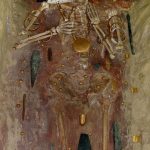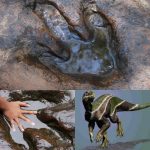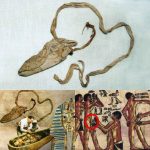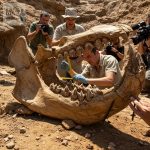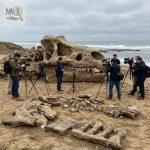Giant of Patagonia: One of the Largest Dinosaurs Ever Found
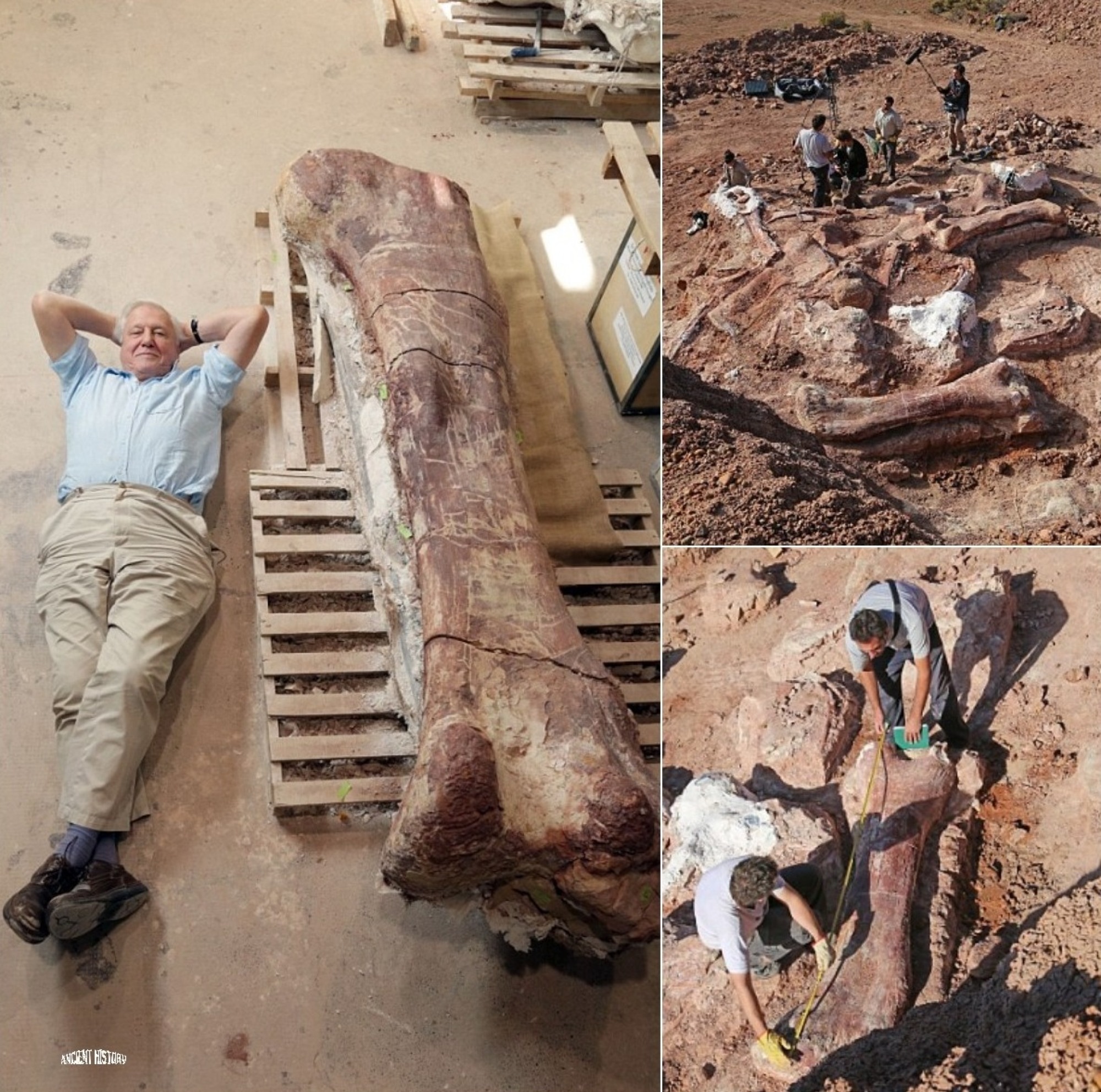
In 2014, the quiet farmlands of Patagonia, Argentina became the stage for one of the most extraordinary paleontological discoveries of modern times. A local farmer, going about his daily work, stumbled upon fossilized fragments that would soon be recognized as belonging to a creature of unimaginable size: a titanosaur, among the largest dinosaurs ever to walk the Earth.
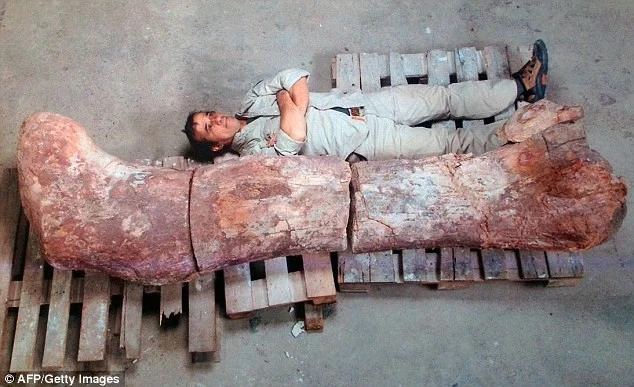
These fossils, dating back approximately 100–95 million years during the Late Cretaceous period, reveal the scale and majesty of a species that challenges our understanding of life’s possibilities on land. Estimates suggest this colossal herbivore measured more than 37 meters (121 feet) in length and weighed close to 70 tons. To put that in perspective, it was heavier than a Boeing 747 and longer than four city buses lined end to end, making it one of the largest land animals known to science.
The excavation unearthed a treasure trove of bones, including a femur so massive that it dwarfs an adult man standing beside it. Images from the site capture the awe of archaeologists as they carefully uncovered vertebrae, ribs, and limb bones, each piece adding to the portrait of a creature that once dominated the lush ecosystems of prehistoric South America. The scale of the find required years of excavation and analysis, as specialists pieced together how such a massive creature moved, ate, and survived in its environment.

Belonging to the titanosaur family, this dinosaur was part of a group of sauropods known for their incredible size, long necks, and powerful limbs. Titanosaurs were widespread during the Late Cretaceous, yet the Patagonian giant stands out as one of the most extreme examples of evolution pushing body size to its limits. Scientists studying the bones gain invaluable insight into how these animals supported their massive weight, how their respiratory systems functioned, and how they reproduced in a world teeming with predators.
This discovery is more than a marvel of scale—it is a window into Earth’s evolutionary history. It demonstrates the ecological richness of Cretaceous Patagonia, a region that supported not only these giants but also carnivorous dinosaurs, flying reptiles, and early flowering plants. The survival of such an immense herbivore required abundant vegetation and a finely balanced ecosystem, reminding us of the delicate interplay between climate, resources, and adaptation in prehistoric life.
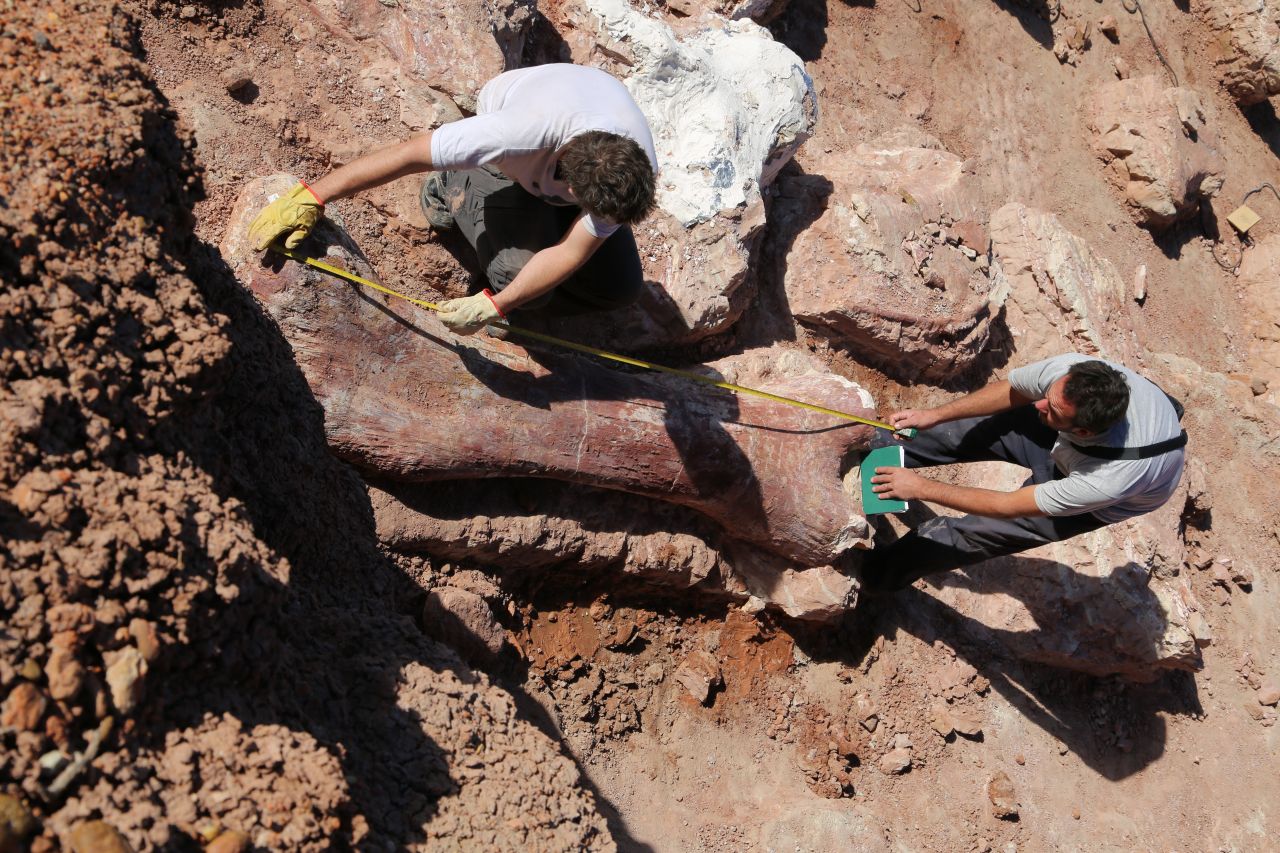
For the public, the Giant of Patagonia evokes both scientific wonder and childlike awe. To stand before the reconstructed skeleton of such a creature is to confront the immensity of life’s history and the creative power of evolution. It is a humbling reminder that our planet has been home to beings so vast they seem almost mythic, yet they were once as real as the soil beneath our feet.
The titanosaur of Patagonia is not merely a fossil—it is a symbol of Earth’s deep past, a monument to nature’s capacity for grandeur, and a lasting testament to the giants that once roamed our world.
#DinosaurDiscovery #Titanosaur #PatagoniaFossils #CretaceousGiants


